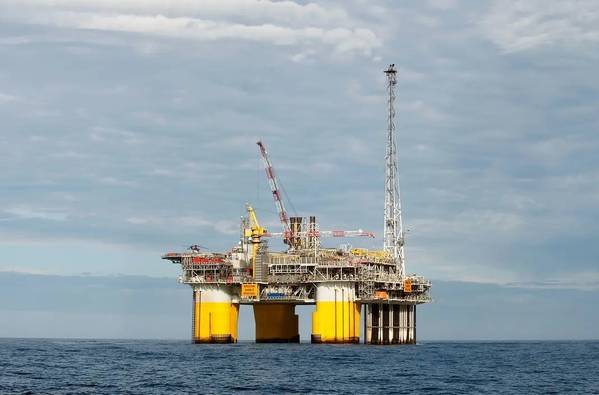
Equinor and its partners Petoro, Vår Energi, and TotalEnergies EP Norge have started production from the first Lavrans well in the Kristin South area in the Norwegian Sea.
The partnership submitted the plan for development and operation (PDO) of the Lavrans and Kristin Q discoveries as satellites to the Kristin field in 2021.
This is the first phase of the Kristin South project for which the PDO was approved by the authorities in 2022.
A new subsea template has been installed and tied into the Kristin platform, now processing oil and gas from the first well at the Lavrans field. The gas will be exported through the pipeline system to the European market, while the oil will be transported to the market by ship via the Åsgard C storage vessel.
Four additional wells are planned as part of the first phase of the Kristin South project, three at the Lavrans field and one in the Q-segment at the Kristin field. The latter will be drilled from an existing subsea template that has been tied back to the Kristin SEMI.
Aker Solutions, through joint venture OneSubsea, and its subcontractors is in charge of subsea production facilities, while TechnipFMC covered pipeline fabrication, pipelaying, and subsea installation.
The expected production in phase one of the Kristin South project is in the PDO estimated at 6.2 GSm3 of gas and 1.9 MSm3 of oil (a total of 58.2 million barrels of oil equivalent).
“The Kristin South project demonstrates our strategy to create value by developing existing infrastructure on the Norwegian Continental Shelf. Together with our partners and suppliers, we have developed the project and started the production from Lavrans in a safe and good way,” said Trond Bokn, senior vice president for project development in Equinor.
“This is a key milestone in our plan to continue to develop new resources in a mature area in the Norwegian Sea. Tying in additional resources to our producing hubs is a cost-efficient way to add production and extend the lifespan of our fields in operation. This approach contributes to energy security and job creation in Norway,” added Grete B. Haaland, senior vice president for Exploration & Production North.
According to Equinor, the CO2 intensity for extraction and production of Kristin South phase 1 is very low - less than 1 kg of CO2 per barrel of oil equivalent. The emissions will mainly be generated from the project’s drilling activities.
Lavrans was discovered in 1995, while the Kristin field was put on stream in 2005. The technical lifetime of the Kristin platform is currently estimated to be 2043 with potential for further extensions.
Equinor Energy is the operator, with 54.82 % stake, with partners Petoro (22.52 %), Vår Energi (16.66 %), TotalEnergies EP Norge (6 %).